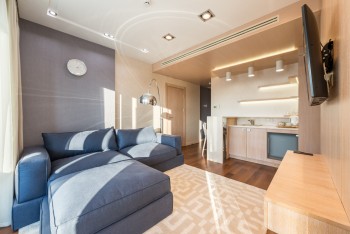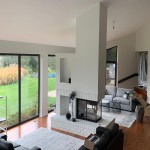Introduction:
Planning a painting project for your home or business in Toronto involves several crucial steps, and one of the most important aspects is understanding painting estimates. A painting estimate provides you with an estimate of the costs involved in your project, allowing you to budget accordingly. In this blog post, we will provide a comprehensive guide to help you understand painting estimates in Toronto. From factors that influence the estimate to tips for getting an accurate estimate, we will equip you with the knowledge to make informed decisions for your painting project.
1. Scope of Work:
The scope of work is a significant factor in determining the painting estimate. Clearly defining the areas to be painted, such as walls, ceilings, trims, doors, and cabinets, will help the painting contractor assess the size and complexity of the project. Additionally, if there are any specific requirements, such as repairs, priming, or surface preparation, it's essential to communicate these details to the painting contractor. The more detailed the scope of work, the more accurate the estimate will be.
2. Surface Preparation:
Proper surface preparation is crucial for achieving a smooth and long-lasting paint finish. The condition of the surfaces, including any repairs or priming required, will impact the estimate. If there are existing layers of paint that need to be stripped, or if there are imperfections such as cracks or holes that need to be repaired, it will add to the labor and materials cost. Clear communication about the condition of the surfaces will ensure that the estimate includes the necessary preparation work.
3. Paint and Materials:
The type and quality of paint and materials used in your painting project will affect the estimate. Premium paints generally cost more than standard options, but they offer better coverage, durability, and color retention. Additionally, specialty finishes or treatments, such as faux painting or textured finishes, may incur additional costs. Discuss your preferences and budget with the painting contractor to select the right paint and materials that align with your needs.
4. Labor Costs:
Labor costs are a significant component of the painting estimate. The complexity of the project, the number of skilled painters required, and the estimated time for completion will all influence the labor costs. Factors such as access to the painting area, height of ceilings, and any additional safety measures required will also impact the labor costs. Experienced painting contractors in Toronto will provide you with a breakdown of the labor costs in their estimate.
5. Additional Services:
Additional services beyond the basic painting work, such as furniture moving, wall preparation, or clean-up, may incur additional charges. Discuss these services with the painting contractor and ensure that they are included in the estimate. Understanding any additional costs associated with these services will help you plan your budget effectively.
6. Obtaining Multiple Estimates:
To ensure you receive a fair and accurate painting estimate in Toronto, it's advisable to obtain multiple estimates from different painting contractors. This will give you a better understanding of the prevailing market rates and allow you to compare the scope of work, materials, and labor costs. However, be cautious of extremely low estimates, as they may indicate subpar quality or hidden charges. Choose a reputable painting contractor with a solid track record and positive customer reviews.
7. Communication and Clarity:
Clear communication with the painting contractor is essential for obtaining an accurate estimate. Provide as much information as possible about your project, including your expectations, any specific requirements, and your desired timeline. Ask questions to ensure you fully understand the estimate and any potential additional charges. A reputable painting contractor will be transparent and willing to address your concerns.
Conclusion:
Understanding painting estimates in Toronto is crucial for budgeting your painting project effectively. By considering factors such as the scope of work, surface preparation, paint and materials, labour costs, additional.











